
Battery and Charger Buying Guide 2021

This is the 2021 update for the Battery and Charger Buying Guide for Light Painting Photographers. An increasing number of Li-ion battery based flashlights/torches now come with high quality internal charging, and included batteries. Whilst this means there is a decreasing requirement for buying batteries and chargers (though I always recommend using dedicated chargers instead of internal charging), the Li-ion safety section is increasingly important.
Batteries
AAA/AA/C/D/9V
Most light painter’s first flashlights/torches are based on AAA, AA, and less commonly C, D, and 9V size batteries. These use non-rechargeable Alkaline, Zinc-chloride (Heavy Duty), Lithium, or rechargeable NiMH batteries. These all have a max voltage of approximately 1.5V, apart from 9V batteries. Compared to li-ion batteries, these are generally very safe, and easy to purchase.
Alkaline batteries generally have good capacity, and are widely available almost everywhere. As they are not rechargeable, they are quite wasteful. Alkaline batteries can also leak, especially if they are left is a discharged state for a long time. Heavy Duty (Zinc-chloride) batteries are a cheaper alternative but will only last a few minutes in a good flashlight.
Lithium batteries (such as Energizer Ultimate Lithium) typically last twice as long as good Alkaline or NiMH batteries, but also cost more than twice the price of Alkaline. As they are not rechargeable, I would only really recommend them for use in extreme temperatures (-40C to +60C) or if you no access to power supply for a while.
For AAA/AA batteries I would recommend using low self discharge (LSD) NiMH batteries. Recommended AAA and AA size NiMH batteries include:
– Premium quality (high capacity, high number of recharges, very low self discharge)- Fujitsu Ready To Use, Ikea Ladda (white or grey, made in Japan version), Panasonic Eneloops/Eneloop Pro (made in Japan in versions only).
– Good quality – GP, Powerex, Ansmann, Duracell, Energizer, Eneloop (Chinese made), Tenergy.
Whilst there are plenty of cheaper NiMH AAA/AA batteries, my testing has shown many of them to significantly reduce in capacity after only approx. 10 cycles, so lower purchase cost may not be cost effective in the long run. YMMV!
For rechargeable C, D, and 9V batteries there are decent options from Varta/Rayovac, GP, and Powerex.
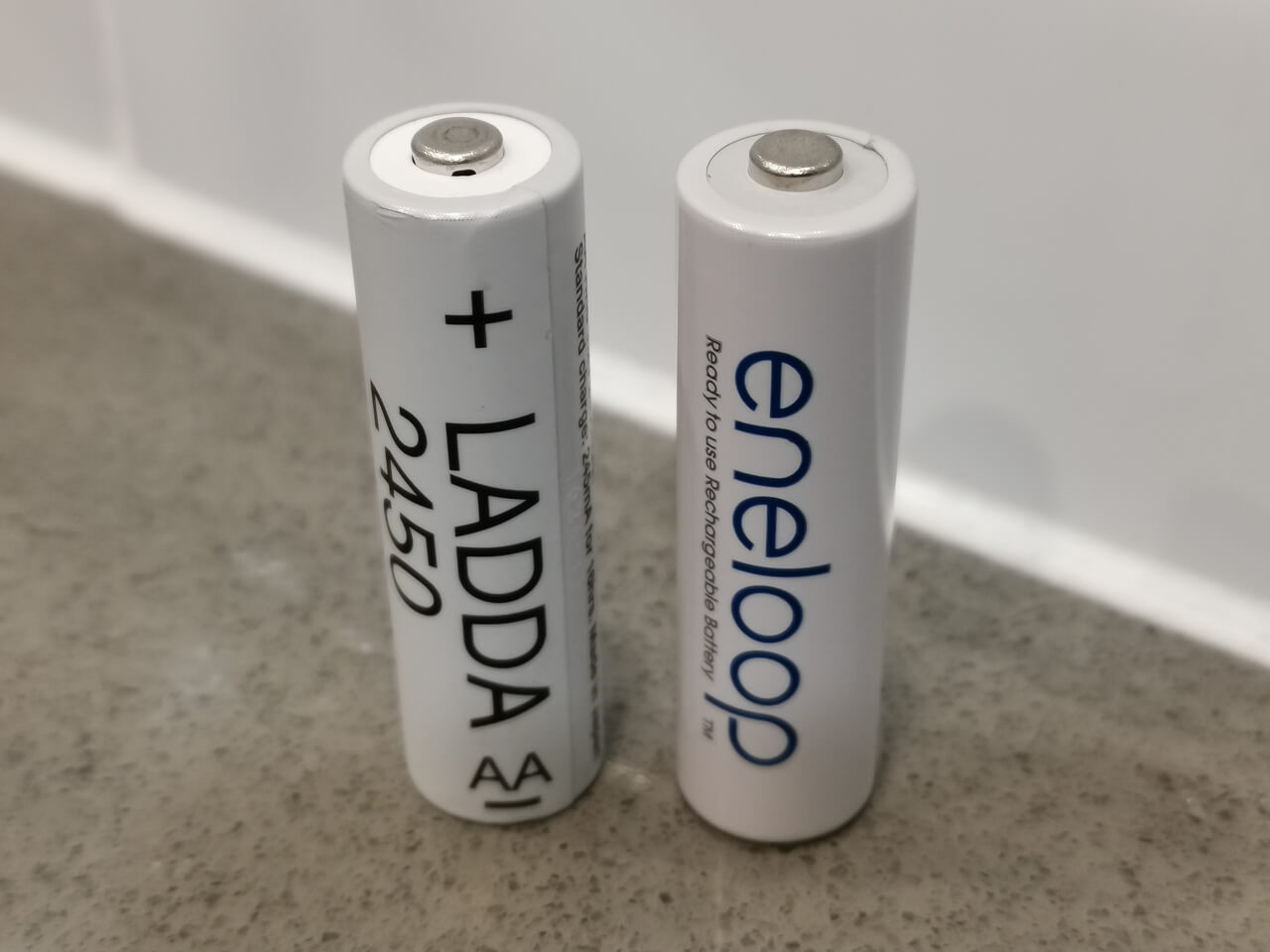
The best rechargeable NiMH batteries are made by FDK in Japan, but are increasingly harder to find in some regions.
Button/Coin Batteries
Some very small ‘keyring’ flashlights, LED glow sticks, and RF remote controls may use lithium or alkaline button/coin batteries. Be extremely careful with button batteries around children, as there have been many cases of permanent injury and death in children who have swallowed them.
CR123
Lithium CR123A (3V) batteries are non-rechargeable, and were popular in the earlier years of LED flashlights. They have a good shelf life and can handle large temperature ranges. Unfortunately, they have been known to explode if 2 CR123As in series have different voltages. They have largely been superseded by rechargeable Li-ion batteries, and thus I don’t recommend using CR123A batteries.
Li-Ion – Overview and Safety
The rest of the battery section of this buying guide will focus on Li-ion batteries, which are pretty much essential if you want to use high brightness flashlights. The vast majority of Li-ion batteries used in flashlights have a max voltage of 4.2V, and a nominal voltage of 3.6/3.7V. Whilst newer IMR and INR Li-ion batteries are more chemically stable than older ICR types, use of Li-ion batteries still requires knowledge of the safety risks required to safely use these batteries.
Key Li-ion safety aspects so as to avoid damaging the battery are as follows:
Do not charge above 4.2V. High quality chargers should terminate charge at 4.2V.
Do not discharge below 2.5V. Look for flashlights with low voltage protection, or mechanically lock out the flashlight if possible (usually by unscrewing the tail cap). Beware of parasitic drain, depleting batteries in stored lights.
Use a charger with voltage readout.
For lights that use more than one Li-ion battery in series or parallel, you must use matching batteries and they must always be at the same voltage before use (check using a charger with voltage readout). If voltages are not the same, you risk reverse charging, and possible explosion.
Always insert batteries with the correct polarity. Most flashlights now have reverse polarity detection or prevention.
Do not short circuit the battery.
Store spare batteries in plastic cases. No one likes battery explosions in their trousers!
Do not use damaged Li-ion batteries, this includes damaged wrappers.
Do not charge or discharge at currents higher than the battery’s rating.
Batteries with added protection circuits will help prevent over charge, over discharge, or over-current. However, protection circuits are an additional point of failure.
Avoid older and more volatile ICR chemistry Li-ion batteries where possible.
Always periodically check on the batteries during a charge – I don’t advise charging at night or if you are out of the house.
Charge, and store batteries and flashlights in less flammable locations.
Keep batteries out of reach of children, and people with no common sense.
Li-ion batteries will degrade slower if stored closer to 50% capacity (around 3.6-3.7V)
If you were very unfortunate, and a Li-ion battery starts to heat up rapidly (thermal runaway), quickly leave it in as safe a place as possible and keep your distance. The pressure build up during a battery vent will cause an explosion from both ends of the flashlight tube (and side if there is a side button). If there is a source if ignition, there may be flames and resulting fire. Avoid breathing in the fumes, and call the fire brigade immediately.
Li-ion batteries have names that denote the approximate size of that battery in mm. The first two numbers are width, and the second two are length. The most commonly used in flashlights for light painting are 18650 and 21700 batteries. Unfortunately, that is where the standardization ends, especially when you add protection circuits onto the ends of some batteries, which adds to both the length and width. Not all 18650 or 21700 batteries will fit in a flashlight (and even some chargers) as they may be too short, too long, or too wide. Some flashlights require button tops, some don’t. Thus it is advised to read reviews, or follow manufacturer recommendations of battery sizes that will fit.
Li-ion – recommendations
Most high quality consumer flashlights (including brands such as Nitecore, Fenix, Ledlenser, Eagtac) usually use button top protected batteries, though some brands (such as Olight) annoyingly use proprietary protected batteries. These have a protection circuit added by 3rd party companies, that protect against overcharge, low voltage, and excessive current. Most of these consumer flashlights are now sold with Li-ion batteries included. However if they are not included, or you need additional batteries, you will need to purchase your own. I would advise following manufacturer recommendations, otherwise these are the most recommended protected 18650 batteries.
Best Protected 18650 for Maximum capacity:
– Blazar 3500mAh 10A (Australia)
– KeepPower 3500mAh 10A Protected (Worldwide)
– Orbtronic 3500mAh 10A (USA)
– XTAR 3500mAh 10A (Worldwide)
Note: There are no genuine 18650 batteries with a capacity higher than 3600mAh!
Best Protected 18650 for Maximum current:
– Klarus 18GT-IMR31 3100mAh 12A
– AceBeam 3100mAh 20A
– KeepPower 3000mAh Protected 15A
Best Protected 18650 for Cold Temperatures (-40C)
– Klarus 18GT-LT29 2900mAh 8A
– Nitecore NL1829LTHP 2900mAh 8A
Lights aimed at flashlight enthusiasts (e.g. brands such as Noctigon, Emisar, Fireflies, Convoy, and Lumintop FW series lights) tend to use unprotected batteries. Unprotected batteries usually have a flat top, but some are also available with added button tops for “soda can” style lights that require them such as the BLF/Thorfire/Sofirn Q8.
Best Unprotected 18650 for Maximum Capacity
– Panasonic/Sanyo NCR18650GA 3500mAh 10A – my personal recommendation, but getting harder to find.
– Samsung INR18650-35E 3500mAh 10A
– LG MJ1 3500mAh 10A
– Molicell M35A 3500mAh 10A
Best Unprotected 18650 for Maximum Current
– Sony US18650VTC6 3000mAh 30A – most recommended
– Sony US18650VTC5A 2600mAh 35A – highest current, though overkill for flashlights!
– Samsung INR18650-30Q 3000mAh 15A
– LG INR18650-HG2 3000mAh 20A
Best Unprotected 21700:
– Samsung 50E 5000mAh 10A – best for capacity (the 50S is even better at 20A but in short supply).
– Samsung 40T 4000mAh 35A – best for high current and good capacity
Also consider LG and Molicell 21700 batteries.
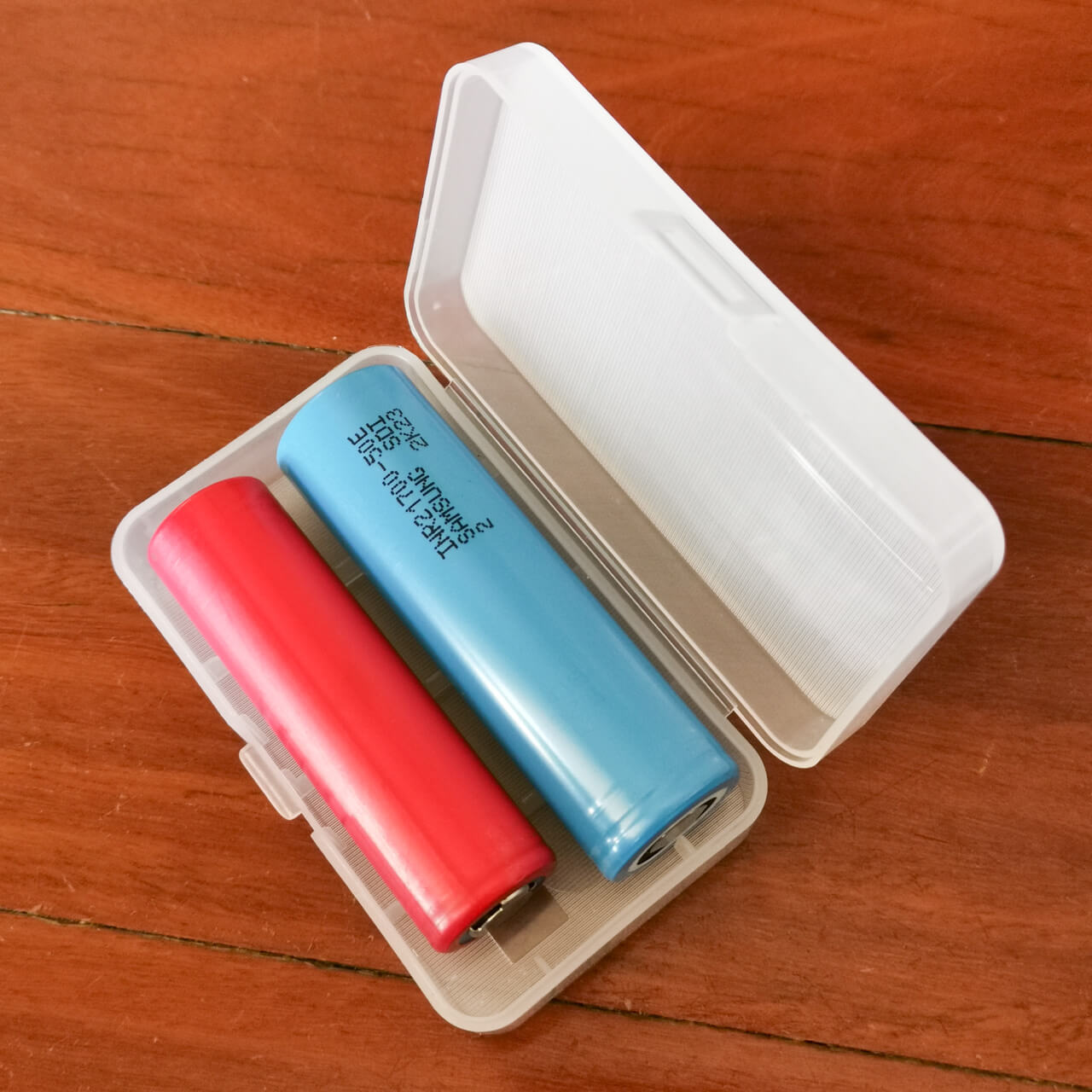
18650 and 21700 unprotected Li-ion batteries
Li-ion – What To Avoid
Unfortunately, there are still many very bad and dangerous Li-ion batteries available (including from Amazon, eBay, and Chinese electronics retailers), with highly over-exaggerated current and capacity ratings. Any 18650 battery with a capacity over 3600mAh, or 21700 battery with a capacity over 5100mAh is fake or misleading! Brands to avoid include Ultrafire, GTL, GTF, GIF, SkyWolfeye, Meco, and Elfeland. There have been many reports on flashlight forums of Ultrafire batteries exploding, resulting in serious injuries!
Chargers
NiMH Chargers
Most NiMH chargers (including ones for sale at supermarkets) are ‘dumb’ timer based and can overcook batteries, rapidly shortening their lifespan. Thus it is recommended to only use smart chargers. Good NiMH only smart chargers include:
– Panasonic BQ-CC65 – advanced 4 bay smart charger
– Panasonic BQ-CC63 – 8 bay smart charger
– Panasonic BQ-CC55 – best value 4 bay smart charger
However, unless you are only ever intending on using NiMH batteries, I would highly recommend looking at multi-chemistry chargers (see below) that can charge both NiMH and Li-ion batteries, plus some can also act as powerbanks.
Many multi-chemistry chargers can also charge C and D batteries, but for 9V there are fewer options, with some specialist Maha Powerex models being recommended.
Flashlight Internal Chargers (Li-ion)
Most consumer grade, and some enthusiast grade Li-ion battery flashlights now have internal charging mechanisms, using USB (micro, or USB-C) or magnetic chargers. In some cases, the charging port is in the battery. As long as you buy from reputable flashlight brands, the quality should be high (unlike a few years ago). Be aware that some magnetic charging connections need to be kept away from conductive materials such as steel wool so as to avoid a short circuit and resulting fire!
Multi-chemistry (NiMH and Li-ion) Chargers
If any of your flashlights do not have internal charging, you want to keep a better eye on your battery voltage, or you need to charge lots of batteries at the same time, I would highly recommend purchasing dedicated multi chemistry chargers (NiMH and Li-ion). These allow you to monitor battery voltage, or even battery analyzing functionality such as internal resistance, and capacity testing. I no longer recommend any basic Li-ion chargers without voltage display, or budget analysing chargers with documented QC issues, which is why some popular chargers (such as from Liitokala and MiBoxer) are not on this list.
Best NiMH/Li-ion Chargers (voltage display):
– Nitecore UMS2 – Nitecore’s most advanced 2 slot charger
– Nitecore UMS4 – Nitecore’s most advanced 4 slot charger
– Nitecore D2 -popular 2 slot consumer charger
– Nitecore D4 – popular 4 slot consumer charger
– GyrFalcon All-88 – best 8 slot charger
– XTAR VC2S – best 2 slot charger with USB power supply
– XTAR VC4L – best 4 slot charger with USB power supply, fits protected 21700
– XTAR X2 Extended Version – excellent value and high quality 2 slot charger, fits protected 21700
– XTAR X4 Extended Version – excellent value and high quality 4 slot charger, fits protected 21700
Best Analyzing NiMH/Li-ion Chargers (voltage display, internal resistance, and capacity testing):
– Vapcell S4 Plus – best value 4 slot analyzing charger, fits protected 21700s
– XTAR VC4S – best value 4 slot analyzing charger aimed at consumers, with QC3.0 USB power supply
– XTAR DRAGON VP4 Plus – high quality 4 slot consumer orientated charger, but in need of an upgrade
– SkyRC MC3000 – most advanced analyzing charger, but for experts/enthusiasts only
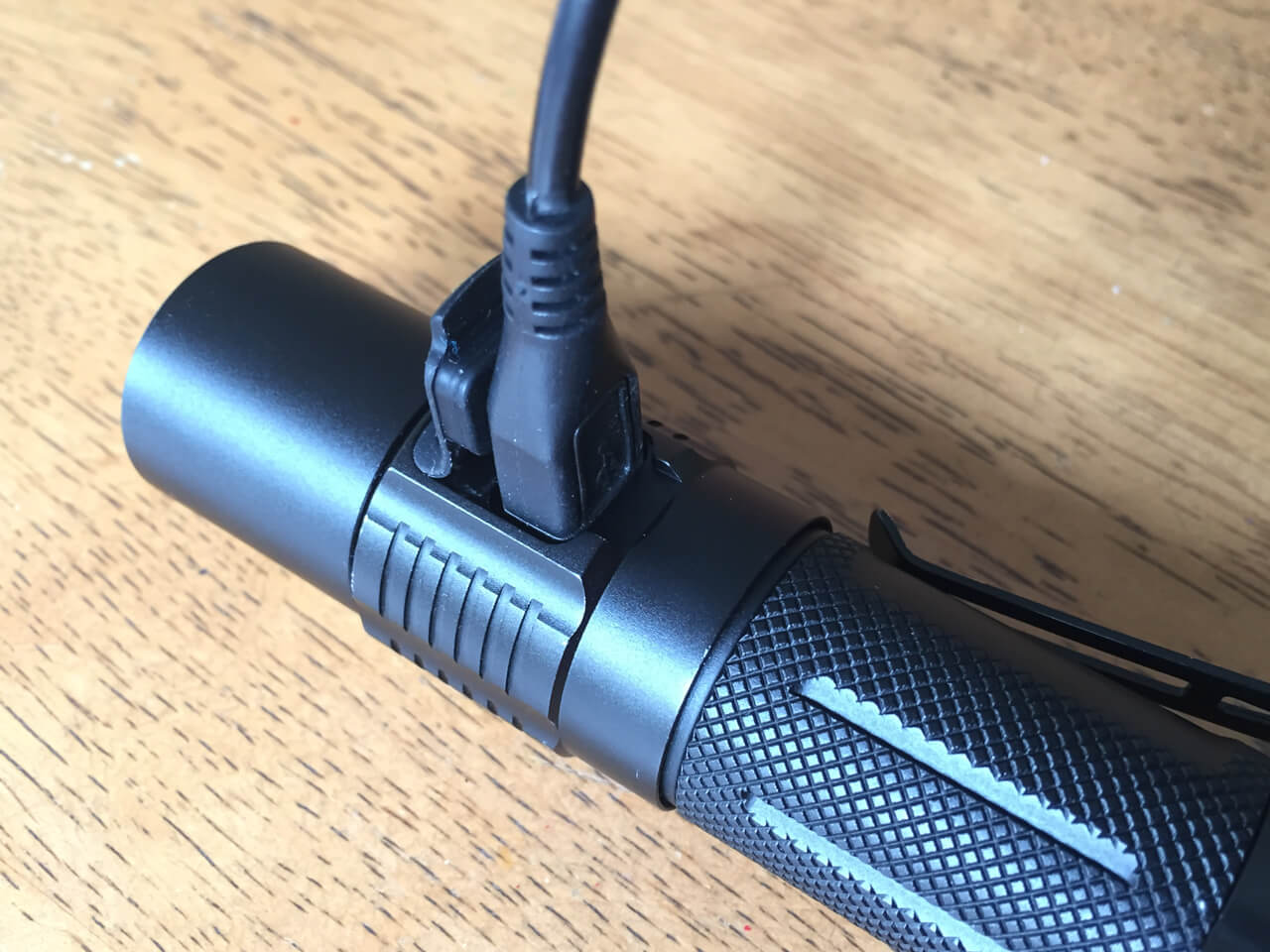
Most commercial grade flashlights now have internal charging – though I still recommend using dedicated chargers

The Vapcell S4 Plus is currently the best value for money analyzing charger
Where to buy Li-ion batteries
Due to safety reasons, Li-ion shipping is currently problematic. International shipping has become more restricted. Supply chain issues due to COVID-19, plus high demand for Li-ion batteries in various consumer devices has caused stock shortages and price increases. Many Li-ion battery manufacturers also do not wish to sell loose batteries to consumers. If Li-ion batteries are not included with a flashlight, I would recommend to purchase from as close to home as possible. Flashlight/torch and vape stores are good places to start, especially for flashlight brand batteries, but can be expensive. Online retailers recommended on flashlight forums include:
Supersports600 eBay (Australia – currently only selling protected batteries)
Ecocell (Australia)
Lanplus (Australia)
Nkon (EU)
Akkuteile (EU)
Ecolux (UK)
18650UK (UK)
18650 Canada (Canada)
Illumn (USA, also ship to Canada)
Liion Wholesale (USA)
18650 Battery Store (USA)
Orbtronic (USA)
Mountain Electronics (USA)










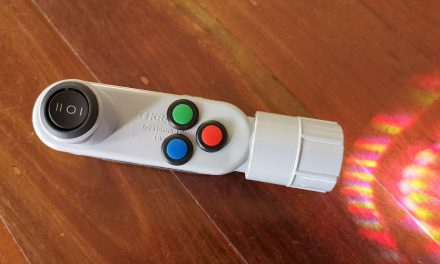

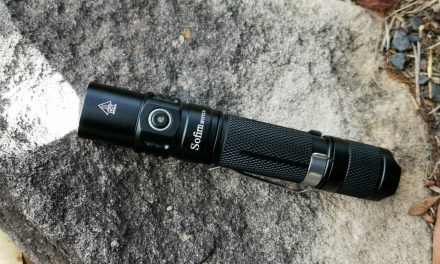
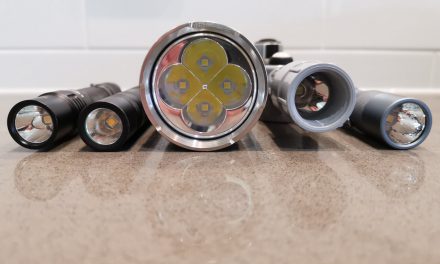

nice